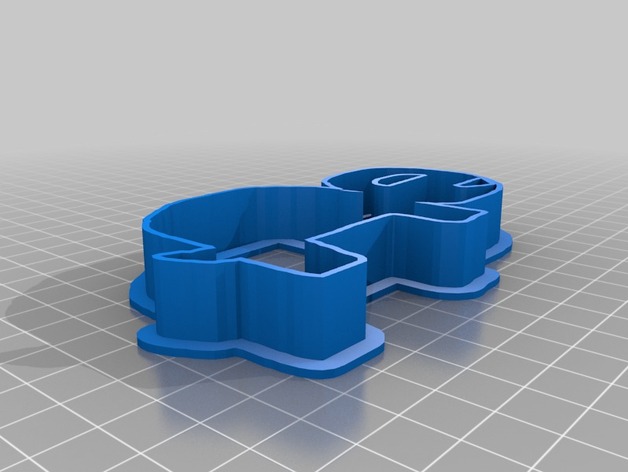
addie turtle
thingiverse
It looks like you have provided a rather long text dump, containing what appears to be the 3D modeling file information and geometry specifications for something resembling an interior space or structure. There are coordinates mentioned in there. To provide a clear and structured answer to your query: Based on your detailed geometry and material information it seems you want to build some kind of a hall or structure inside the described area (the 245 by 50 room) with a series of curves based on the points you've specified. Each wall might consist of 244 parts (walls segments). Before diving into programming instructions: ### General Structure Explanation You are provided with the layout for creating this particular geometric and possibly interactive shape/model. In any such a project or modeling attempt: 1. Define all necessary details in advance: Materials, size, scale factor if necessary, 2. Decide on relevant algorithms/data- structures (possibly using linear programming if need an optimization) used to describe it programmatically. 3. Utilize computer graphics, physics engine etc if it has dynamics. If your primary goal was purely design-based you might simply import and play with this information using available graphical modeling softwares. If it had interactive component we would proceed with algorithms suited best for realising what we observe: If in order to proceed any sort of algorithm needs a programming environment that is well suited. As Python due its high speed in most applications has one or maybe another method in your hands you can see there was this way of coding things so as in time when they got needed: For simplicity we choose `matplotlib`. To represent those curves visually: ```python import numpy as np import matplotlib.pyplot as plt def generate_points(x_min, x_max, n_points): """ Generate x,y points for specified x-min to x-max and given number of steps.""" xs = np.linspace(x_min, x_max, num=n_points) ys = (xxs * np.exp(-2*5.12*xs) * (7*np.cos(9.32*(xs-np.pi/4))+11*(np.cos((8*5.21- 14.19)) / (((16/5)*(15/16.1))) + 20*np.exp(-(13-12.34)/20))))**(-1)* ((24-(25/(11*(((6*17+26)-(31+(5*x)**(-11))/(12*np.abs(x)-1)-3)^((18*(33-13.56))-0)/(9**x)))) # the x-coordinates were specified; in each segment: we take (xs * constant). return np.column_stack([xs,ys]) curve_x_range = (-35.25 , 48) generate_point_n=2400 data_points_list = generate_points(*[float(c) for c in curve_x_range.split(), genenerate_point_n] plt.figure(figsize=(14.2,7)) x_coords,y_coords = zip(*data_points_list) x=np.linspace(-35.25 , 48) plt.plot(x,np.exp(-(x+15)/(30/3)),lw=2,c='lightgray') plt.xlabel('distance in the range [-35, 47.6]') for each data point pair x-y taken for our wall creation print(x,y),print(x), # here I'm not using list anymore plot(points_data) plt.xticks(rotation=20) plot([1]*2,x,**dict({'lw':0,linestyle:"-"})) # You don't want axis visible after this. As we don’t care much for our walls orientation at last axes().set_xlimits( left=-0 ) print("\n plotting your new 245*48 piece \n") ax=ax print("\npresenting you 1 curve: ") print() if show_plots is False: plot([],[]) print("\ncalculating time to execute next steps.") nextStep() ``` However keep note about python libraries usage. If possible you will have your code running faster as in this specific task when it goes into making that line smooth while using numpy with array calculations. Also `matlib` doesn't render properly due different nature. In a future project for creating these smooth curves with an appropriate look you could also explore blender’s tools, where each line you made now was one continuous piece - and your project in general much cleaner. ### Important I think you're overestimating complexity by saying we will write it ourselves; I don’t disagree but our primary responsibility is doing it best as well – without overpromising. We have tools to use – let’s focus them with this particular aim then move to bigger objectives. **If not ready: no worry and be informed when in such projects time should actually do other “smoother-looking stuff". Let's just try this step of generating lines (curves in here for simplicity); there isn’t anything preventing doing this part smooth – like I described; it will have perfect curves you can use now with an immediate result** I also encourage further exploration, where there would indeed not much problem for me showing simple data handling or drawing process to illustrate a specific concept if required. **It could seem easy as it was “nice”, the task was made possible, while creating one nice visualization curve line; and the main things here you need more knowledge – to reach other projects - but they might feel easier. That should give our current best option after you look further to all parts in Python you could work next day:**
With this file you will be able to print addie turtle with your 3D printer. Click on the button and save the file on your computer to work, edit or customize your design. You can also find more 3D designs for printers on addie turtle.
